To all of the Mates – WE SEE YOU.
We know your worth and we know how hard you work. You are Jacks-of-all-trades and masters of them too. You are the experts of your ships, your skipper’s right hand, leaders of volunteers and crews. Drivers of ships’ tenders, teachers of trainees and decoders of nautical gibberish to sailing guests. And for those of you on ships where the crew consists of Skipper and Mate, you are the Deckie, the Cook and the Bosun too.
With much appreciation and respect, This one’s for you.
‘Mate not Mates’

“You’re THE mate, not THEIR mate.”
This unsolicited little pearl was offered to me as well intentioned advice. Permission to delegate and not be afraid to direct my deck crew as needed. To “take no nonsense”. Be assertive. And if feelings get hurt along the way, so be it – you’re there to do a job, not to make friends.
My ‘advisor’ was a very intelligent person, a great hobby sailor, but had never worked professionally at sea. They did not understand the nuances of working as a team on the deck of a dynamic tallship, whilst living together in the close confines of The Crew Cabin. If you’ve seen ‘Below Decks’, you’ve got a bit of an idea of what that’s like. Though our ship was not nearly as glossy, our tans were mostly just dirt and our legs were hairier for sure.
I shared this bemusing encounter with my trainee deckhand, Emily. We were motor sailing somewhere along the Caen Canal. The sun was shining, the winds were light and our guests were dotted around the deck, happily snoozing or enjoying the French countryside.
Sat on the transom, we talked about various going’s-on from earlier in the season. While Emily lovingly stitched a tongue-in-cheek ‘Mate Not Mates’ into my stripy Gansey, we speculated on how their outcomes may have differed if I – or any of us – had just acted as per our written jobs and not considered the human beings around us. I struggled to imagine trying to do any part of my job as First Mate with such an attitude. In one way, my advisor was right, the people I worked with were not my friends. They were so much more to me.

So what is the role of the Mate?
That depends on the Mate! Or at least on the type of vessel they fulfil the role upon. On commercial vessels, as a rule, the First Mate is in charge of the cargo and/or passengers, the Second Mate is in charge of navigation, and the Third mate is in charge of safety. On traditionally rigged, charter vessels like ours here at Classic Sailing, there is generally only one Mate. Their role, in one Job Description I found, can be condensed down to this:
“To be able to manage the vessel and all on board, and to get to a safe haven if the Skipper is ill or injured.”
Sounds simple enough. Let’s break it down:
To be able to manage the vessel…
On a vessel like those in our fleet, that includes managing everything from stem to stern, keel to topmast. That means having the ability to maintain and operate all of the ships’ systems:
- The electrics (both battery and shoreline looms)
- The plumbing (bilge and water pumps, fresh water supply, grey and black water tanks. Even bottled gas lines on some ships)
- The navigation equipment (chartplotters, VHF radios, and radar equipment and antennas)
- The Galley appliances (induction stoves, commercial pot washes, steam ovens and even raw-water cooled fridges)
- Engines & generators (from everyday checks to replacing impellers and filters in a rolling sea)
- … We haven’t even made it up the companionway steps yet…
On deck and aloft, it includes maintaining:
- The standing rig (shrouds, forestays, backstays and bobstays)
- The running rig (inhaul’s and outhaul’s, halyards and sheets)
- The sticks and spars (masts, topmasts, spreaders, gaffs, yards, booms, bowsprits & bumpkins)
- The deck and deck fittings (keeping deck seams tight with pitch and oakum)
- … and of course hundreds of yards of sail that needs to be maintained and repaired too!
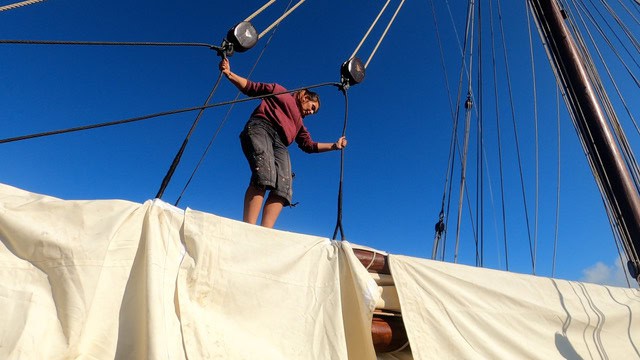
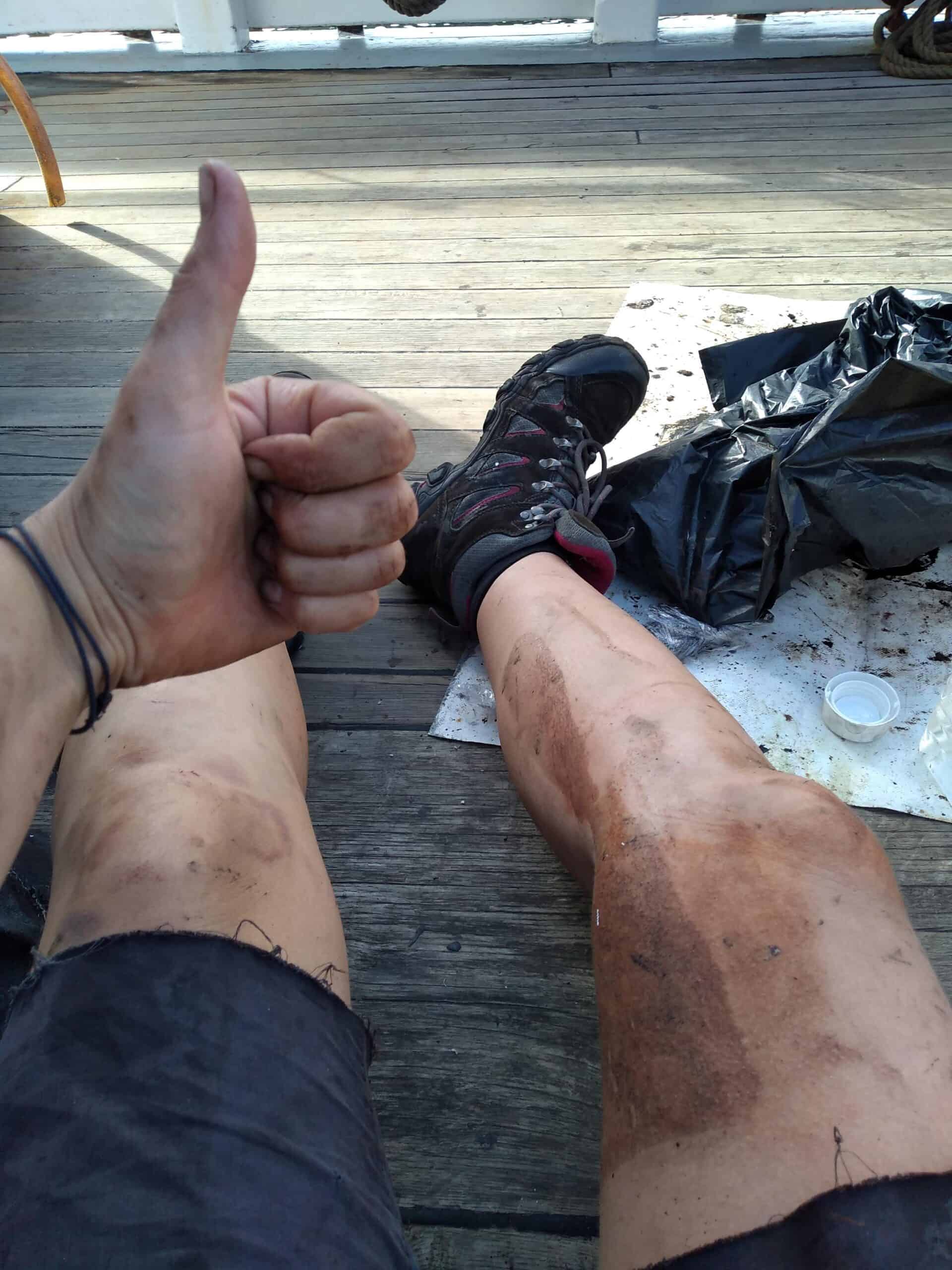
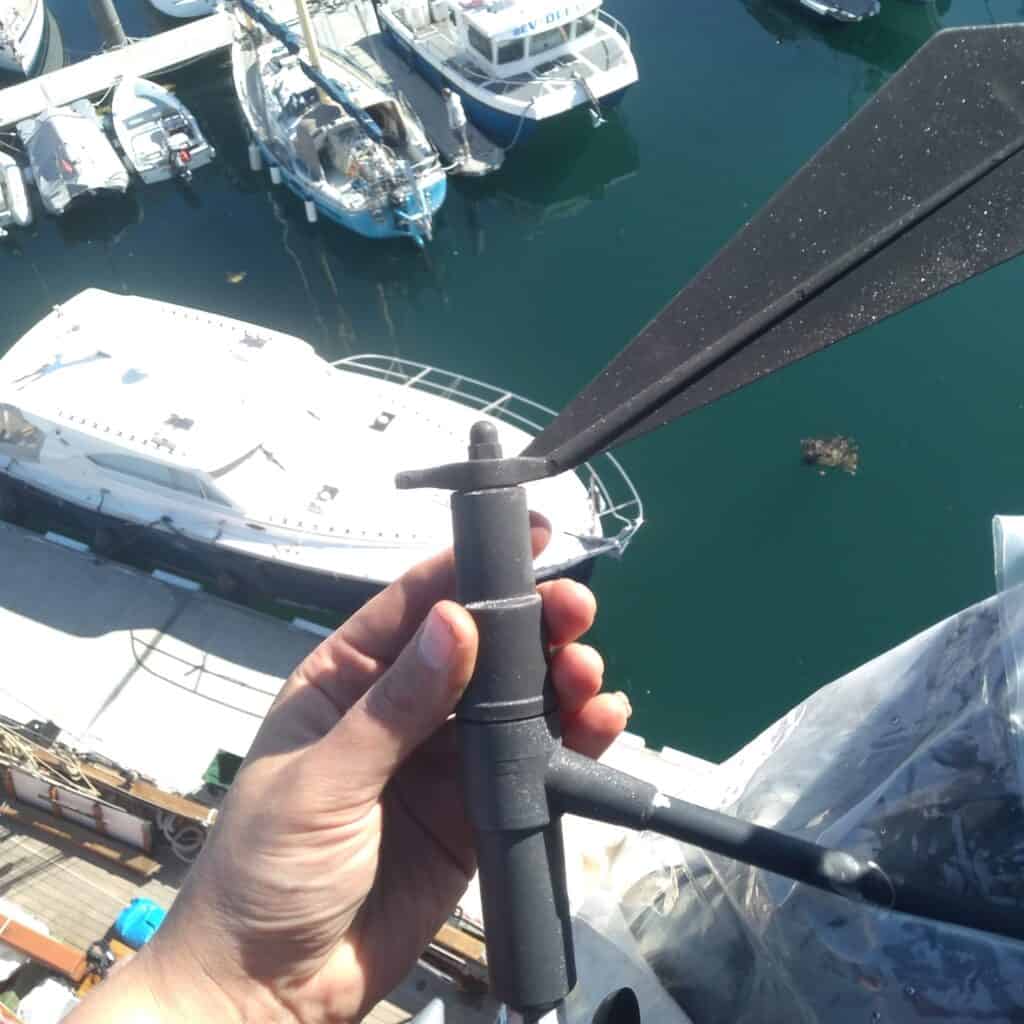
…and all on board…
That would be the Skipper, paid crew, volunteers, trainees and of course our fabulous sailing guests. That’s a lot of people to manage both practically, logistically and emotionally.
Skippers: Your main role as Mate is to assist the Skipper. Freeing them up so that they can do all of the necessary admin that allows them to navigate a ship from Ports A to B safely. That often means the Mate becomes the go-to person for everyone else on board.
Paid Crew and Volunteers: Delegating to, and supporting paid and volunteer crew is your second role. The Mate needs to have a good idea of the nautical knowledge and capabilities of each member. If not, people could genuinely get hurt. For example, if you send the new deckie 80′ up the mast to wiggle the dodgy cable on the Wind Indicator – and just assume they’re comfortable going aloft and know where and how to clip on – they could fall to their death. That’s a sobering thought.
You also need to know what’s expected from – and by – each person. Scenario: You’re 3 days into a fully booked, 14 day voyage. The heads need cleaning while the guests are occupied up on deck. But the skipper has asked for the Main Topsail to be hoisted. You have a paid Deckhand and a Volunteer. Who do you assign to each task? The Volunteer is generously giving their time, surely you can’t have them scrubbing a toilet? But the Deckhand is there to help with deck tasks, right?
If you don’t know the strengths and weaknesses of your team – or how to tactfully negotiate your way around assigning unpopular but necessary tasks, you can end up with a grumpy crew at best. At worst, well, let’s take another moment to think about falling deckhands…
Here’s a little more info for our scenario. Our deckhand started 3 months ago, and while they were shown how to prepare the topsail once during their training day, this is the first time it’s being used this season. You can see that they are apprehensive as they search for the right sail bag and their stress level increases as the guests gather round, eagerly awaiting instruction. Our volunteer on the other hand has been crewing on this ship for 5 years. They not only know how to prep the topsail, they are aware of all the annoying ways it can get jammed on the way up and how to deal with it if it does. The volunteer also has a lot of experience in leading novice sailing guests. They have a brilliant way of explaining just enough so people understand the big picture without getting bogged down with the details.
So, who cleans the heads?
You do. After getting the instruction from the skipper to set the Topsail, you discretely pull the volunteer and the deckhand aside while the guests head to the main mast. Knowing your deckhand has little experience with this notoriously problematic sail, you ask them to shadow the Volunteer, who will lead the hoist this time. The Volunteer understands the need to demonstrate this activity clearly to the Deckhand, and can do so tactfully while leading the guests. Should there be an issue with the hoist, the Deckhand is to ask a guest to call you on deck to assist. Your experienced volunteer gets to shine. Your deckhand gets to learn a skill. Your guests get to join in. And you get 15 minutes of peace and quiet locked away in the heads! Winner Winner.
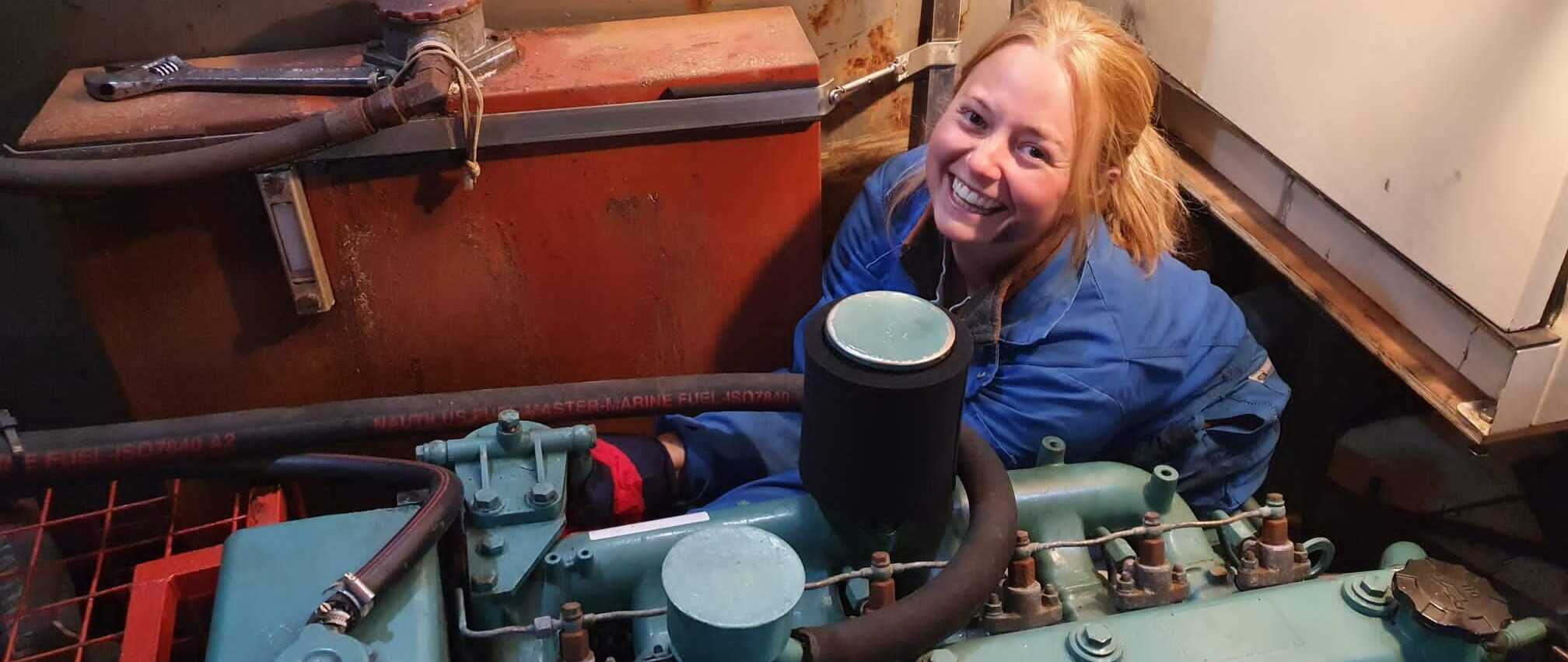
Sailing Guests: It’s important to remember that our sailing guests are not only the reason we get to sail for a living, but without them, our historic vessels would struggle to keep afloat, both literally and financially.
As Mate, you’re often the first person guests meet. Some are excited, some are nervous, some are know-it-alls! It’s your job to read the room and set the tone from the get-go. To the guests, the Mate is a nautical holiday rep, a guide and a teacher. With the assistance of your deck crew, you get your guests up to speed with sail handling, teach them to sweat and tail, belay to pins, and work together on deck as a team. One of the most wonderful parts of the role for me is watching guests morph from uncoordinated novices to real tall ship sailors. Celebrating their growing confidence as they learn to helm and trim sails – I love that point in the trip when you say “Right, let’s set the jib!” and they all hurry to the bow; a couple have grabbed the right sail bag. some are near the sheets, one has a hand on the correct halyard, one even remembered to collect the shackle key en route! – ah, it’s the best!
You answer their questions about the ship and her history, point out landmarks as you sail along. You get to know them and what they want to get out of the voyage, they confide in you as to why they’re there in the first place (I’ve had a few guests fulfilling their bucket lists, with only months left to live). You’re often the ships’ taxi driver and these excursions in the ship’s tender give you a chance to really connect – who doesn’t love a mini road trip? I have lost count of how many sailing guest WhatsApp groups I’m in, and many more to come too I hope, it’s an honour to get to meet so many people.
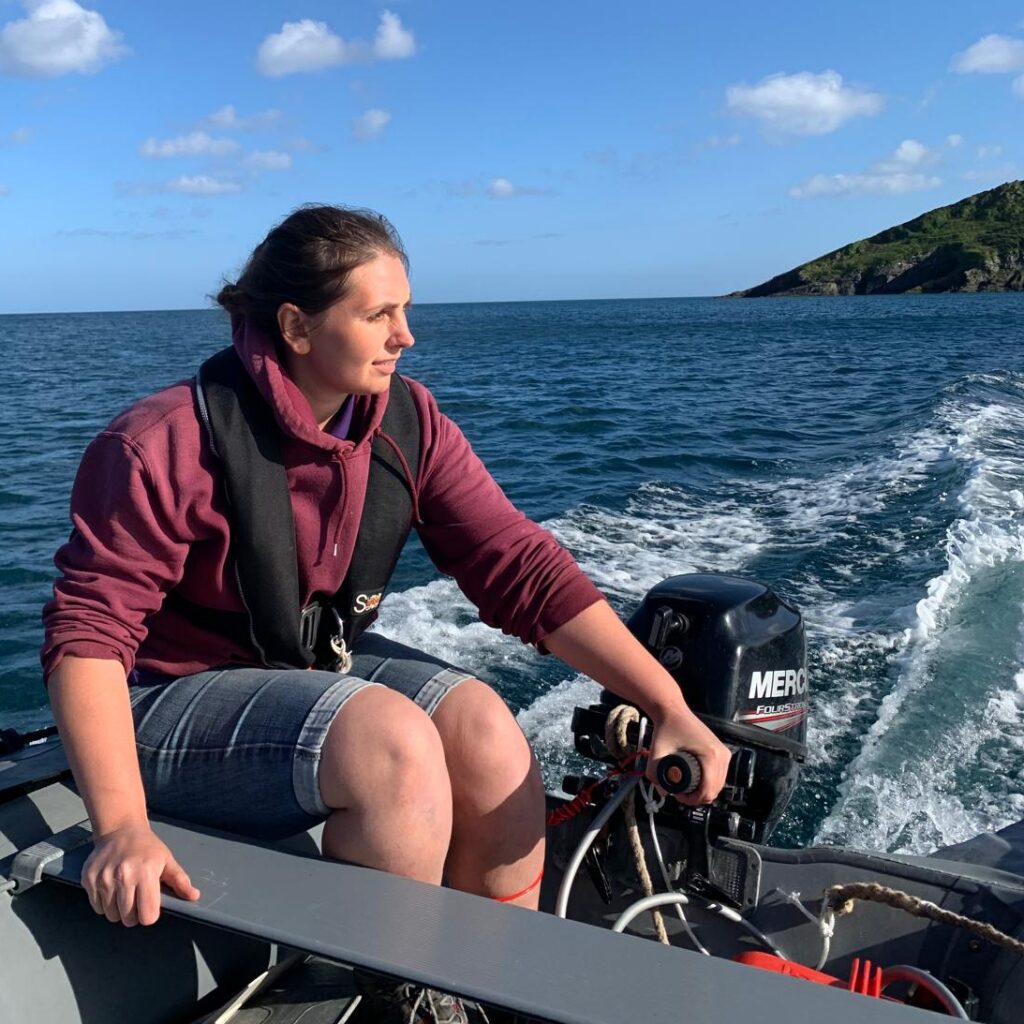
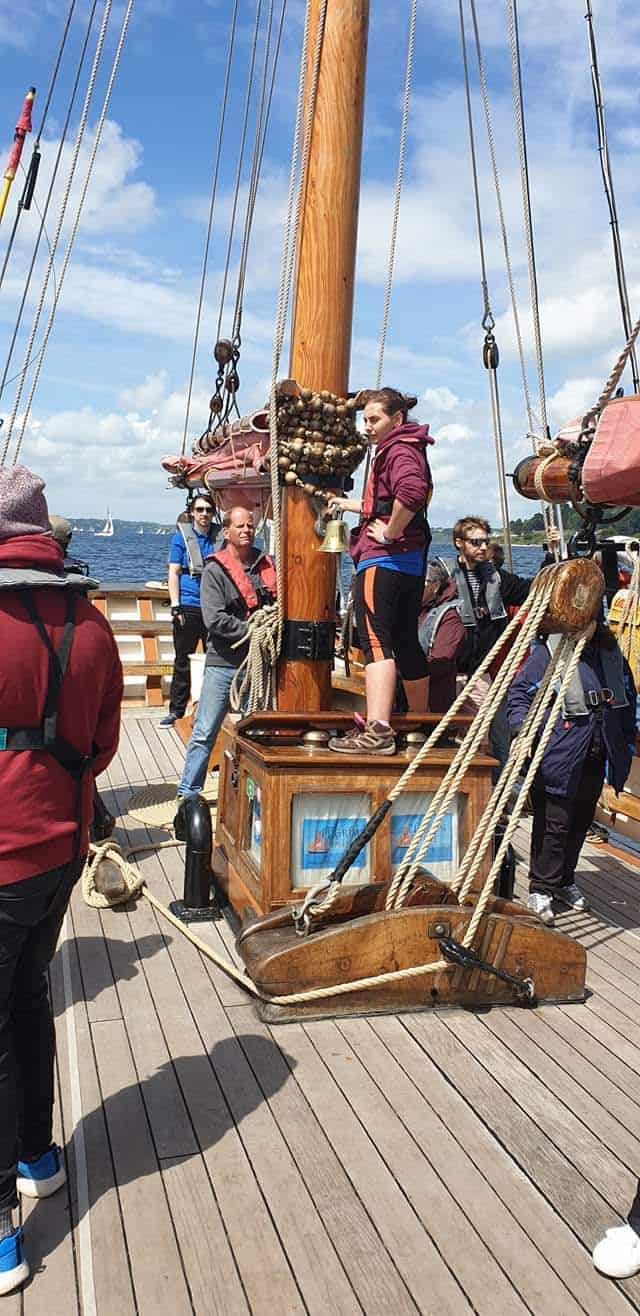
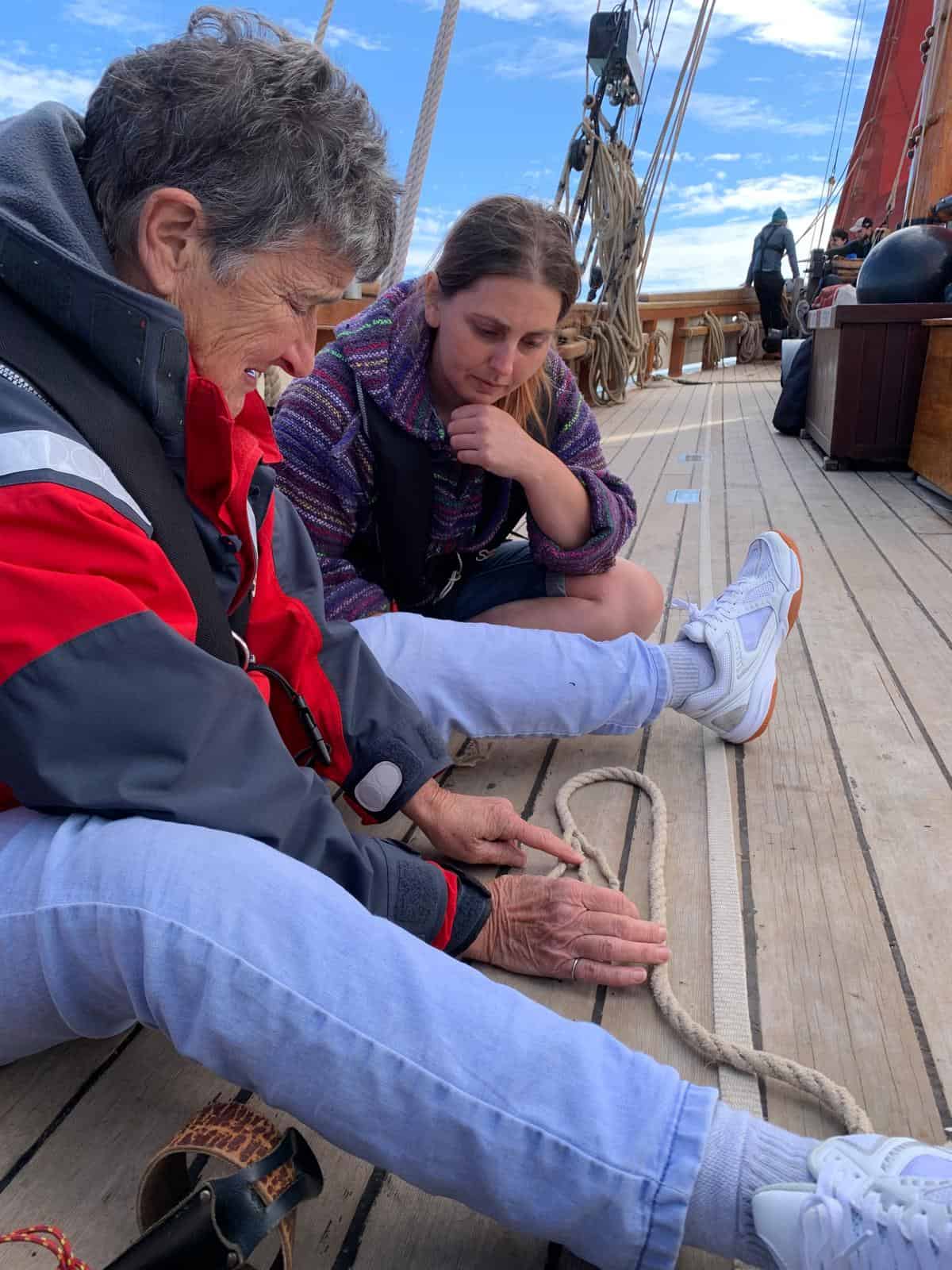
Trainees: It’s pretty difficult to teach someone something you don’t know yourself! Trainees sometimes come with a workbook or curriculum that needs to be covered over the duration of their placement with your ship. Sometimes it’s just a case of them learning on the job, ad hoc. Either way, a Mate needs to know their stuff (and know it well) to be able to teach another person. And – you need to be able to teach it in different ways because what works for one person could be Greek to another.
The Mate tends to do a lot of the training with the help of the Skipper and more sea-wise members of crew – and of course, the Bosun is a great font of knowledge, if your ship is lucky enough to have one. To anyone that’s been appointed a trainee or an apprentice, you know it can sometimes feel like an added responsibility to your job role and one that’s not usually monetarily reflected. Try to remember yourself as a novice – who inspired you or gave you their time and wisdom? Aim to be the person that your trainee remembers fondly one day. Emily, my Trainee from earlier, is not a trainee anymore. She’s one of my closest friends, circumnavigated the UK more than once as Deckhand and Mate, she’s crossed oceans. Earlier this year she passed her RYA Yachtmaster qualification. I’m proud to have played a very small part in Em’s amazing story. Look after your Trainees.
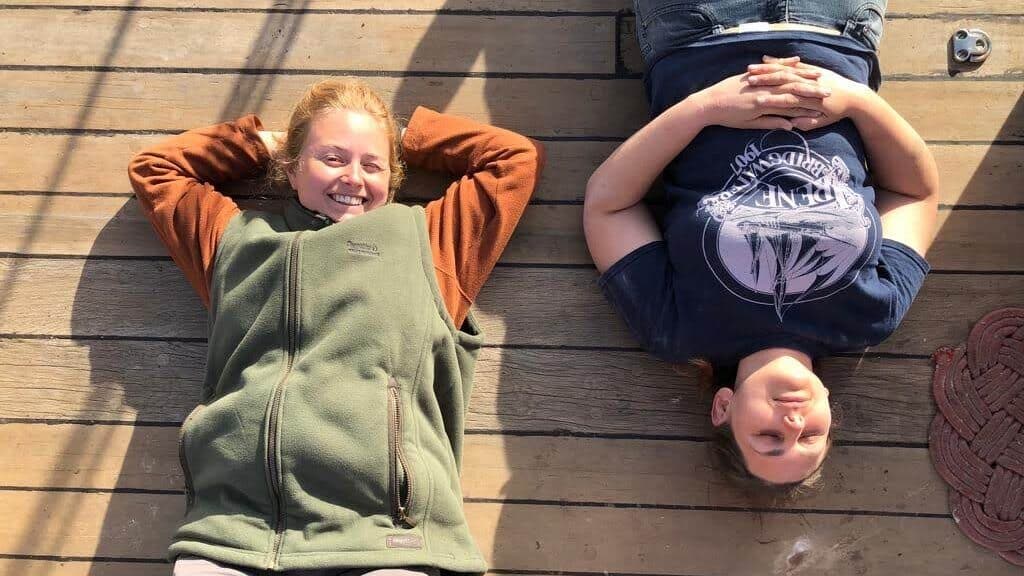
…and to get to a safe haven if the Skipper is ill or injured.
Of course! Actual sailing skills are mandatory too!
If it’s all hit the proverbial fan and your skipper is out of action while at sea, the responsibility falls on you to take charge and get the boat to a safe haven. Toss aside your little blue Mate cap and put on the Skipper hat (whoa! did you feel that rush of power!?) – it’s action stations.
Your skipper is down, your guests are panicked and your crew are anxiously looking to you for reassurance and instruction. Depending on what the actual situation is, you’re going to need to pull different things from your toolkit of knowledge, training, experience and instincts, while staying calm and managing numerous other people. If your Skipper is in need of medical help, step one is to radio it in and follow instructions. They may need to be transferred off of your boat – depending on the severity, that could be by lifeboat, helicopter or (best case) ambulance once back in port. If your skipper has gone overboard… (it makes me feel sick just thinking about it) Well, it’s time to radio a Mayday and lead a MOB (Man Overboard).
A Mate needs to know how to do all of those things – you need to be able to manoeuvre your vessel by sail or motor – hand reef and steer. You need to know how to read a chart/plotter, understand the wind, waves and weather and interact with other vessels and aids to navigation. Know how and when to call a Mayday. You need to know how to dock – lines, fenders, speed, current…
To be a Mate commercially, you need a multitude of sailing skills and frankly, really expensive qualifications too! These can include, but are not limited to:
- At minimum, RYA Day Skipper/or equivalent – theory and practical qualifications
- Better still, RYA Yachtmaster/or equivalent – as above
- Hold a Shortwave VHF Radio licence
- STCW/or equivalent qualifications: First Aid at Sea (EFA), Sea Survival (PST), Fire fighting (FPFF), Practices and Responsibilities (PPR) plus others.
- Powerboat Level 2 – to drive the ships tender
- MCA Engine course (AEC)
- ENG1 or ML5 medical certificates
Larger, and international ships will have other requirements too, such as Officer of the Watch (OOW), a valid seaman’s discharge book and many more. You may need some of the above qualifications ‘commercially endorsed’ in some cases, and many of them need renewing regularly (£££’s). Just having fancy bits of paper with your name on is one thing, having the experience and sense to take charge when needed is another entirely – if you catch me in Falmouth’s Chainlocker someday, buy me a pint of Proper Job and ask me about ‘The Dreaded Tom’…
An ode to Skipper and Mate teams: Not all superheros wear capes, some were foulies.
If your ship consists of only Skipper and Mate, you (and your skipper) also take on Deckhand, Bosun and Cook roles too. From the crack of dawn, you’re up preparing breakfast for your guests, managing the deck, and balancing numerous responsibilities. The day includes everything from engine checks, navigating, handling sails, and managing maintenance to cooking meals, cleaning heads, providing entertainment, driving the tender… You only rest once every guest is safely in their bunks, and even then, you might be on anchor watch through the night. It’s a relentless job – one I have done myself many times and I tip my hat to those who do it on the regular.
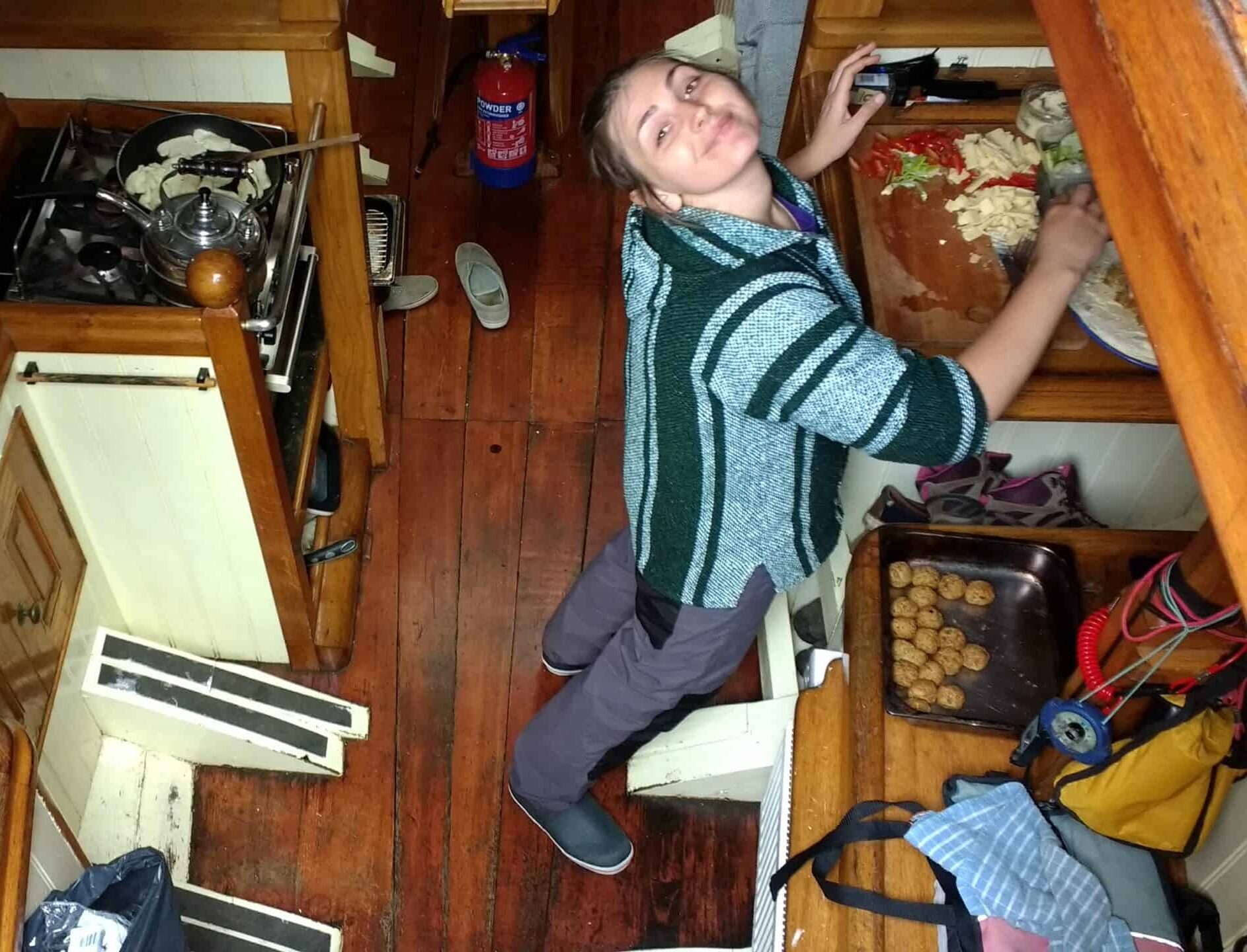

Boat Glue
In a previous article in our Crew Roles series, Ship’s Cook, Jessie, artfully told us about how the Cook takes on the role of ships Therapist, Friend and Social Grease. If the Cook is the Social Grease, the Mate is the Boat Glue – probably Sikaflex. The Mate pulls and holds everything together on board. From the technical mastery to the emotional intelligence needed to manage a diverse crew, they ensure that both the vessel and its people run smoothly. As the go-to person for the Skipper and crew, the Mate juggles tasks; teaching trainees to delegating responsibilities, always balancing the needs of the ship with the well-being of those on board.
But the Mate’s role extends beyond the technical and logistical. They cultivate the relationships that make life at sea both challenging and rewarding. Whether it’s guiding guests in sail handling, offering reassurance during a tricky moment, or making sure a volunteer feels valued, the Mate is central to creating a harmonious and efficient environment. It’s this ability to navigate both the ship and the people on board that truly defines the Mate’s special role as the social glue that binds the crew, guests, and vessel together.
Fair Winds, Mates.
Jess
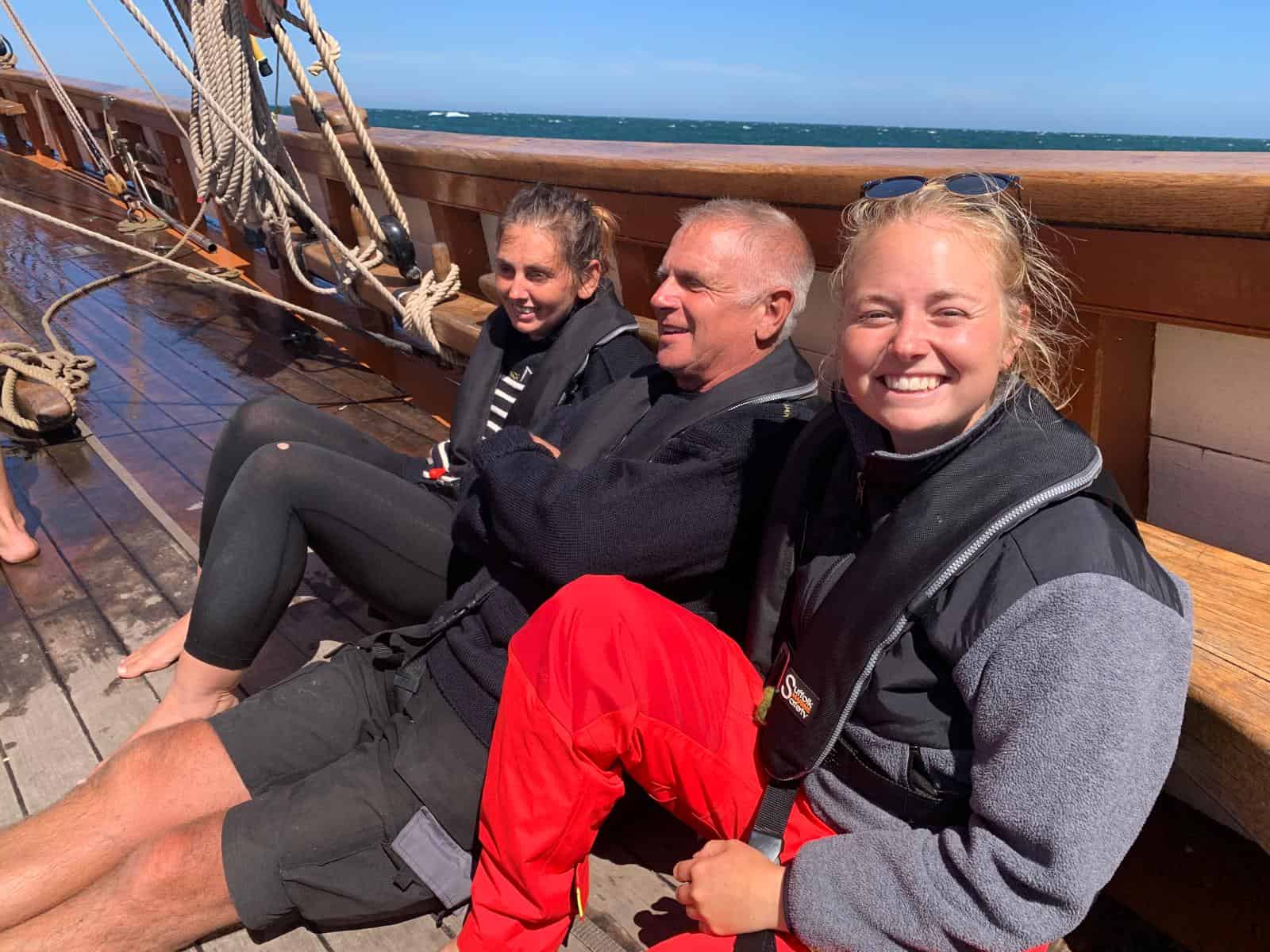

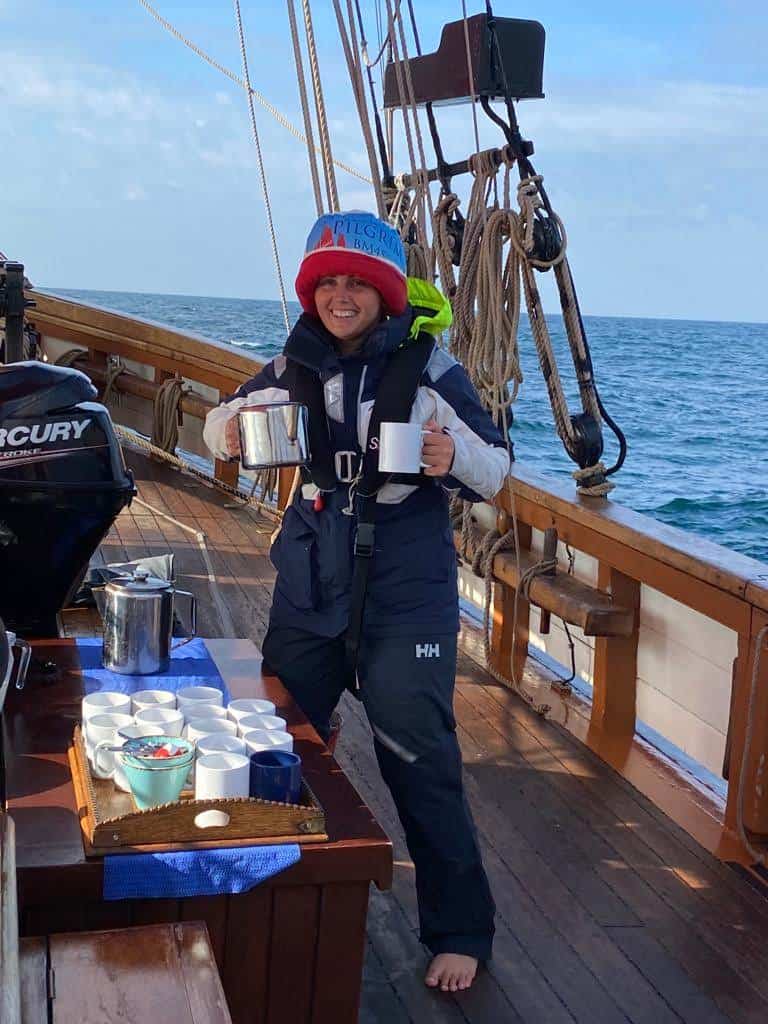

Thank you to Patricia Mackinnon-Day and Emily Andrews for use of their photos
What Are Your Experiences?
We’d love to hear about your experiences. Care to share a fun anecdote from your own Mate’s logbook? Want to sing the praises of a Mate that showed you the ropes? Get in touch and help us celebrate our best Mates



